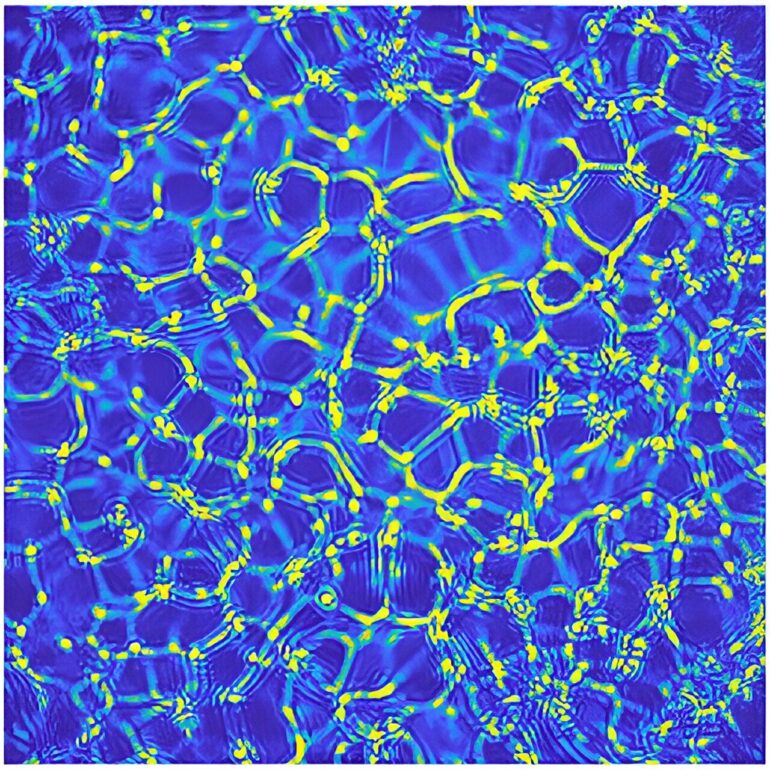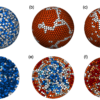An altogether new convective instability has been predicted and experimentally discovered, 140 years after Lord Rayleigh. Convective instabilities are of fundamental importance for both our everyday life as well as for ecology and climate in atmospheric and oceanic science.
A well known example is the Rayleigh-Taylor instability which occurs whenever a lighter fluid moves vertically upwards into a denser fluid, examples of which are volcanic eruptions and the nuclear mushrooms following nuclear explosions.
The mechanism of convective instabilities was clarified by Lord Rayleigh in a series of papers, about 140 years ago (the dimensionless Rayleigh number used to quantify the onset of the instability is named after him) and is still intensely studied as a physical and natural phenomenon whereby self-organized spatial patterns arise as a consequence of a dynamical instability.
Working in close collaboration with our experimental colleagues at University of Milan, we have discovered and mathematically predicted a new convective instability, 140 years after Lord Rayleigh’s work. In the Rayleigh-Taylor instability, the lighter fluid is initially at the bottom and the heavier fluid at the top, hence the fluid mixture is gravitationally unstable in its initial condition. Our paper is published in The Journal of Physical Chemistry Letters.
In our experiment, however, we considered the opposite case: a heavier liquid (glycerol) sits initially at the bottom, while a lighter one (water) sits on top of the heavier one. Hence, the system is gravitationally stable and no one would expect an instability to occur. At this point, we add silica nanoparticles to the system.
The silica nanoparticles tend to move upward to minimize their interfacial energy, i.e., they move from lower regions richer in glycerol towards upper regions richer in water: this is called the diffusiophoresis process.
As a consequence of this upward diffusion of the colloidal nanoparticles, locally denser regions are formed in the water-rich layers, which are then pushed back by gravity. This marks the onset of a hydrodynamic instability. The latter shows up as a peak in the structure factor which is obtained by irradiating the sample with light, and is accompanied by pattern formation.
In practice, cells of locally colloid-poor regions are surrounded by “arms” rich in colloid nanoparticles. In our optical experiment, the arms of the network which is formed appear as bright fluorescent in contrast with the dark-blue regions depleted of colloids. Ultimately, the pattern formation ends with phase separation at long times.
This is a new physical effect (different from both Rayleigh-Taylor and Rayleigh-Benard instabilities), which we have mathematically modeled with coupled diffusion equations for the nanoparticles and the solute (glycerol), from which we can predict the instability onset in terms of the Rayleigh number.
This discovery can have a wide range of potential applications, for both technology and environmental protection. For example, this convective instability can be used to realize new microscopically structured materials by inducing coagulation of the nanoparticles in the network’s arms, which might be a new route for sol-gel processes and to make new materials with a controlled internal microstructure.
The new convective instability could also be used as a method to separate fluid mixtures in a variety of industrial, pharmaceutical and natural systems, and also to separate colloidal contaminants, such as microplastics, from fluids. Finally, it can shed light on the formation of colorful patterns and stripes in the skin of animals from zebras to tropical fish.
This story is part of Science X Dialog, where researchers can report findings from their published research articles. Visit this page for information about Science X Dialog and how to participate.
More information:
Carmine Anzivino et al, Convective Instability Driven by Diffusiophoresis of Colloids in Binary Liquid Mixtures, The Journal of Physical Chemistry Letters (2024). DOI: 10.1021/acs.jpclett.4c01236
Bios:
Alessio Zaccone received his Ph.D. from the Department of Chemistry of ETH Zurich in 2010. From 2010 till 2014 he was an Oppenheimer Research Fellow at the Cavendish Laboratory, University of Cambridge. After being on the faculty of Technical University Munich (2014–2015) and of University of Cambridge (2015–2018), he is a full professor and chair of theoretical physics in the Department of Physics at the University of Milano since 2022. Awards include the ETH Silver Medal, the 2020 Gauss Professorship of the Göttingen Academy of Sciences, the Fellowship of Queens’ College Cambridge, and an ERC Consolidator grant (“Multimech”).
Research contributions include the analytical solution to the jamming transition problem (Zaccone & Scossa-Romano PRB 2011), the analytical solution to the random close packing problem in 2d and 3d (Zaccone PRL 2022), the theory of thermally-activated reaction rate processes in shear flows (Zaccone et al. PRE 2009), the theory of crystal nucleation under shear flow (Mura & Zaccone PRE 2016), the theoretical prediction of boson-like peaks in the vibrational spectra of crystals (Milkus & Zaccone PRB 2016; Baggioli & Zaccone PRL 2019), the theory of the glass transition in polymers (Zaccone & Terentjev PRL 2013), and the theoretical prediction of superconductivity enhancement effects due to phonon damping (Setty, Baggioli, Zaccone PRB 2020). Research interests range from the statistical physics of disordered systems (random packings, jamming, glasses and the glass transition, colloids, nonequilibrium thermodynamics) to solid-state physics and superconductivity.
Citation:
Discovery of a new convective instability in complex fluids, 140 years after Lord Rayleigh (2024, September 6)



